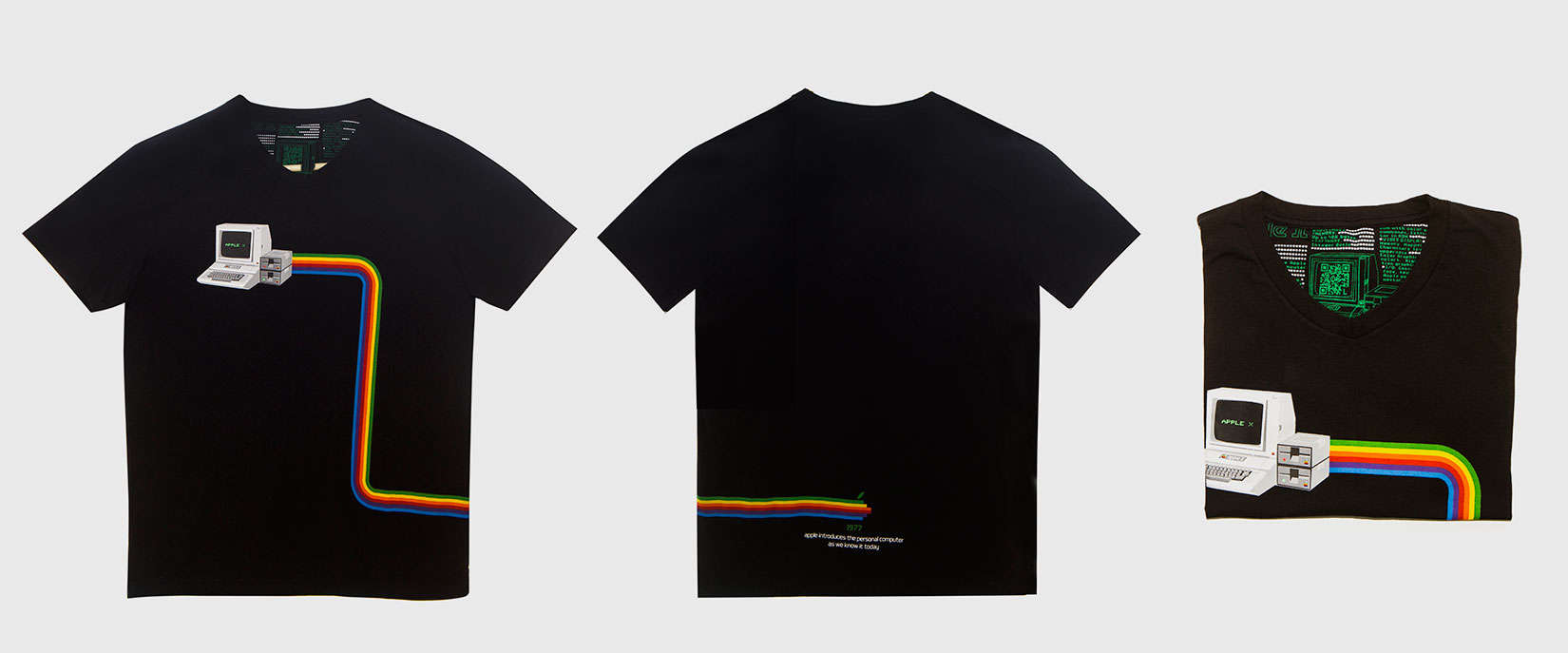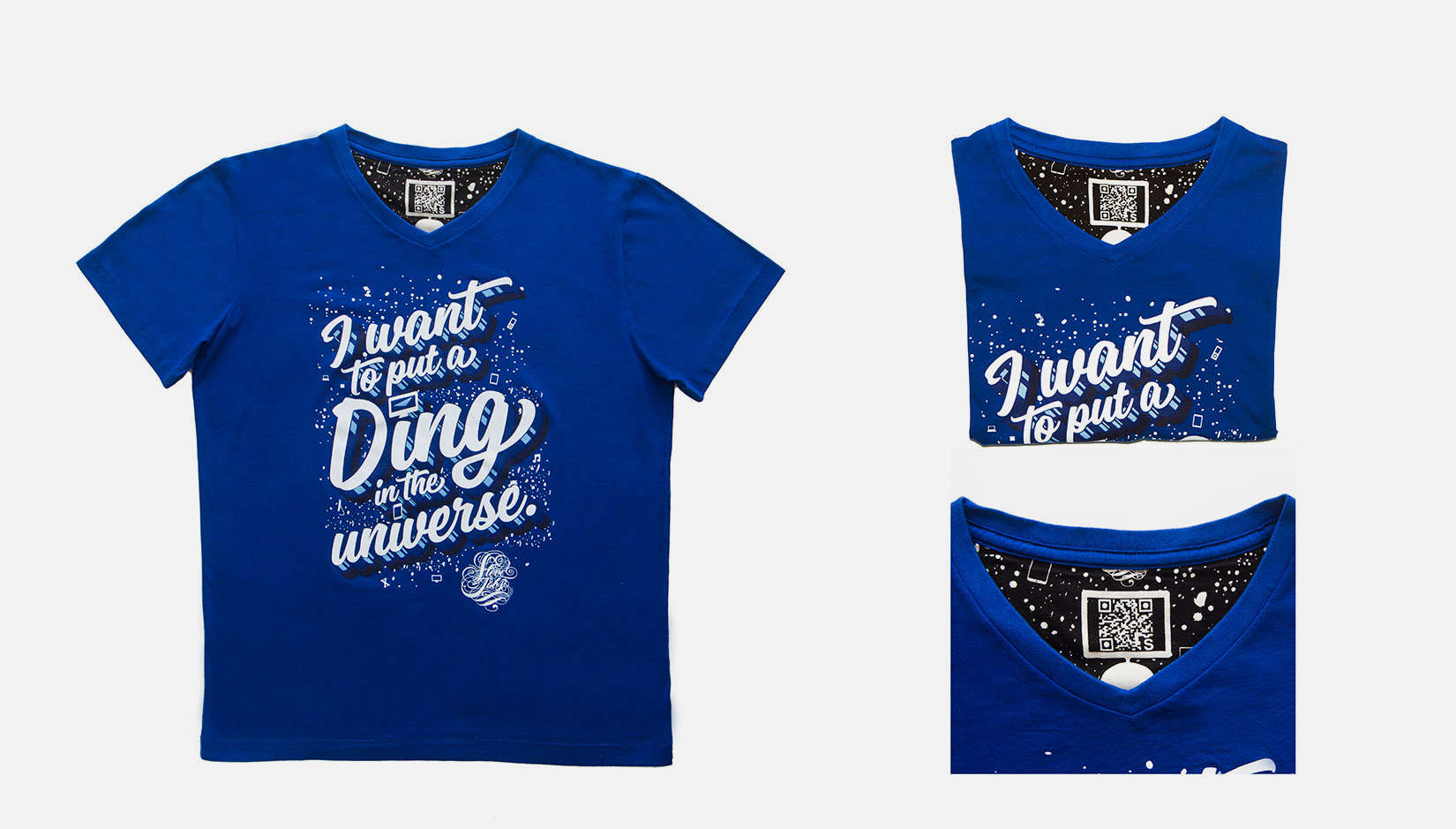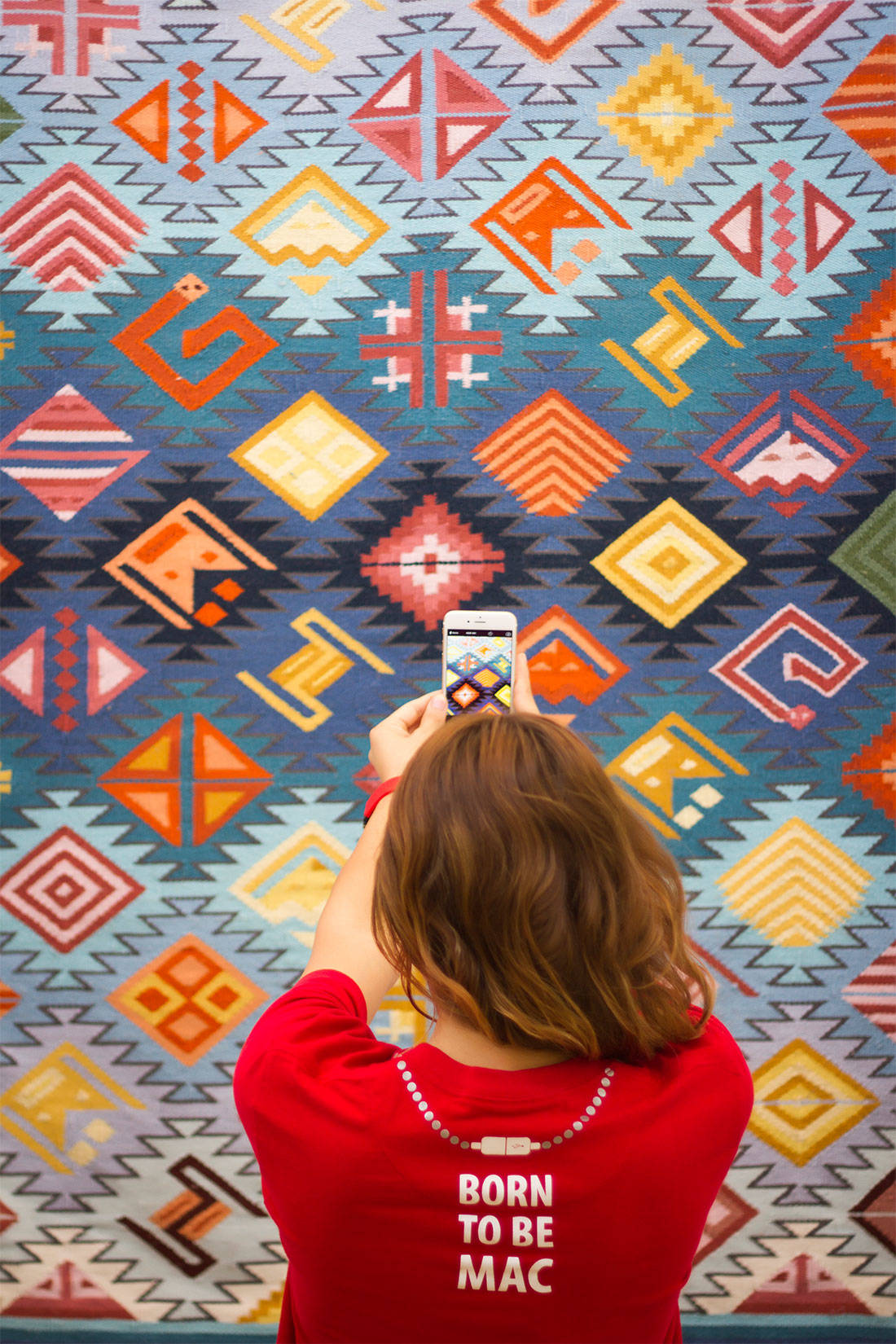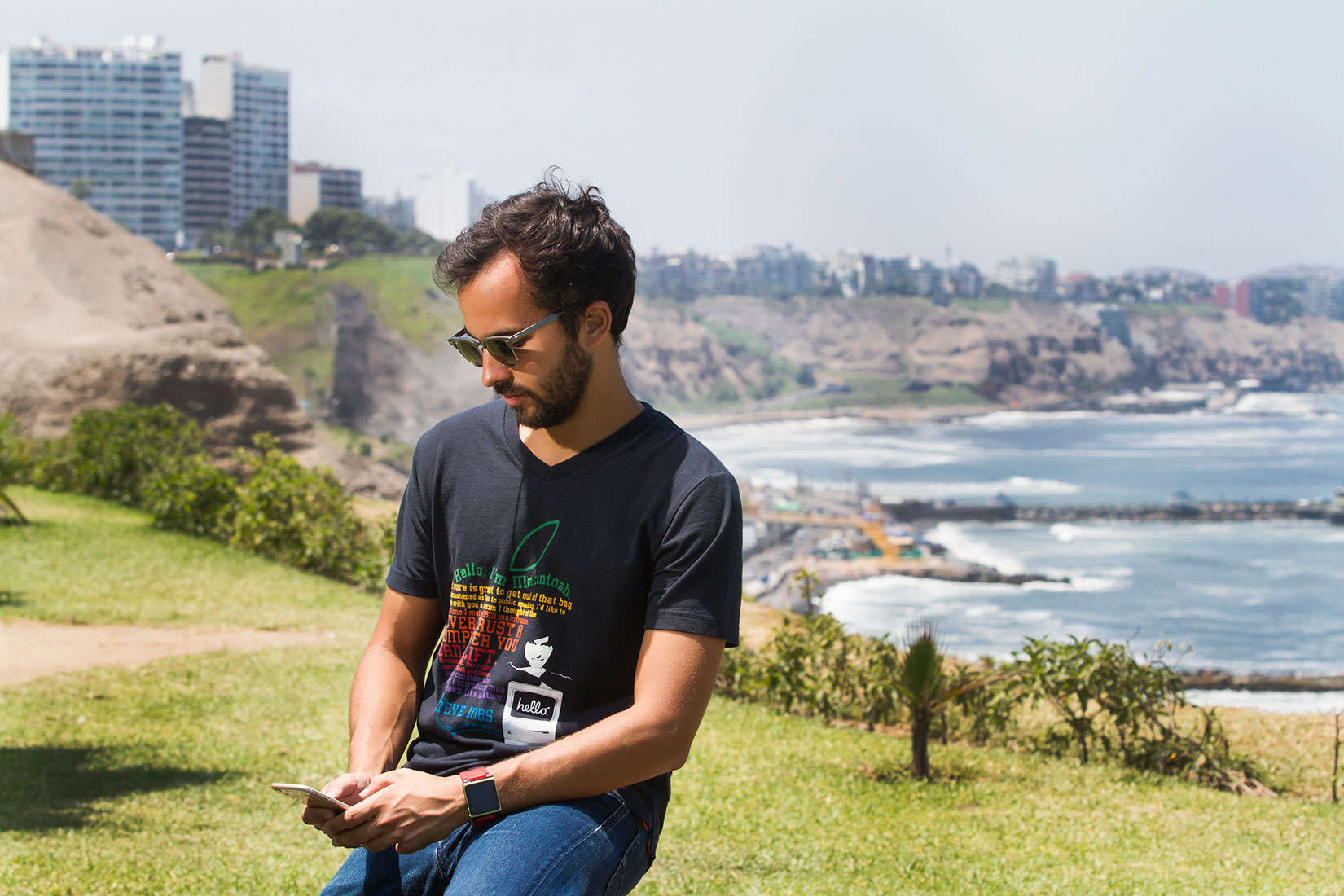Cyril Pavillard has a resume that reads like most tech entrepreneurs. Start a company, enjoy success, sell for profit, repeat.
So what is he doing in the Apple T-shirt business? One, he wants to appeal to Apple fans all over the world with his line of A-Shirts bearing designs that pay homage to great Cupertino products and geniuses. Pavillard, himself, is completely gaga over Apple.
The second reason is more altruistic.
He and his wife have developed a business model of fair trade and sustainability for the textile artists of Peru, where the shirts are made. Shirts are constructed on demand, preventing waste and excess inventory, and artists get 10 times more money than if they were working in the greater textile industry.
“Our ultimate goal is to create for small, passionate online communities (like Apple fans), but make a product with a local supply chain from beginning to end,” Pavillard told Cult of Mac in a Skype interview from his home in Lima. “There’s not a lot of transparency in the T-shirt industry. Products travel all over the world. The shirt might be made of 100 percent cotton grown in the U.S. but then the cotton is shipped to Indonesia to make the thread and then to Bangladesh to make fabric. We wanted to do something completely controlled, transparent and beneficial to the individual workshops here.”

Photo: A-Shirt
When the company launched, subscribers paid around $300 to receive seven handmade A-Shirts, each with a different design featuring an iconic Apple figure, product or quote. This year, the company has four Apple T-shirts, including one featuring the beloved Apple II and another that shows a well-known image of Steve Jobs leaning rather lovingly on the first Macintosh computer.
The subscription for 2016 will run $199. While $50 a shirt might seem steep, Pavillard argues the buyer will find a significant payoff. Because Peru’s cotton is famously durable with fibers that are super-thin, this makes the fabric softer than, say, a random T-shirt you buy at Walmart.
There are no scratchy labels or tags. To receive care instructions, the wearer must scan a QR code printed on the inside of the shirt. In addition to care instructions, the QR code offers information about the artists and the craftspeople who made the shirt.
Cotton in Peru is still picked by hand and a significant part of the textile economy there involves individuals working in small shops. Each person with a hand in the making of the shirt will share in the profits, Pavillard said.
A-Shirts’ first year had more than 300 subscribers at around $250 each. Pavillard said around 55 percent signed up again to get the four shirts next year.

Photo: A-Shirt
Each shirt also comes with a surprise gift. This year, one shirt came with a refrigerator magnet made from a key from some classic Apple keyboard.
Pavillard, a native of Switzerland, and his wife, Alicia Gonzalez, are looking at developing lines of shirts for fans of Lego and coffee, but Apple was a natural starting point.
Pavillard said Apple has “driven my life” since he was 8 when he got his first computer. At 12, he started his own Apple fan magazine. This proved to be more than mere child’s play: In 1999, he started a French-language news site for Apple fans called MacGeneration. He sold it in 2006 and started an education software company that created programs for interactive whiteboards for classrooms.
“I am biased towards Apple, but this was a good way to test the market because of all my Apple contacts,” he said. “With the designs, we want to give people a story that they can emotionally connect with.”
Pavillard never notified Apple about the shirts. The designs do not use copyright-protected symbols; artists are asked only to create something inspired by Apple in some way.
Also, Pavillard is interested in obtaining shirt sizes for Tim Cook, Eddy Cue and Jony Ive so he can send some samples.

Photo: A-Shirt


